Bone Density Risk Calculator
Your Bone Health Assessment
Ever wonder why some people lose a few pounds and then start hearing about weaker bones? It’s not a coincidence. The same calorie cuts and fast‑track workouts that melt fat can also tip the balance in your skeleton, especially if you’re not paying attention to the nutrients and hormones that keep bone strong.
How Weight Loss Impacts Your Bones
When you aim for weight lossthe reduction of total body mass through diet, exercise, or medical interventions, your body enters a calorie‑deficit mode. In that state, it looks for any source of energy, and unfortunately, bone tissue can become part of the mix. Studies from 2023‑2024 show that people who lose more than 10% of their body weight without strength training see a 2‑3% drop in bone mineral density (BMD) within a year.
What Exactly Is Bone Loss?
bone lossthe gradual reduction of bone mass and density, leading to weaker skeletal structure isn’t just about getting brittle; it’s the gateway to osteoporosisa disease characterized by porous, fragile bones that fracture easily. While osteoporosis often gets a bad rap for older adults, the early stages-osteopenia-can start while you’re actively shedding pounds.
The Hormonal Bridge Between Fat and Bone
Fat tissue isn’t just a storage sack; it’s an endocrine organ. It releases leptina hormone that regulates appetite and also influences bone formation. When you drop fat quickly, leptin levels plunge, sending mixed signals to osteoblasts (the cells that build bone). Additionally, women often experience a dip in estrogena hormone crucial for maintaining bone density during rapid weight loss, especially if the diet is very low in calories.
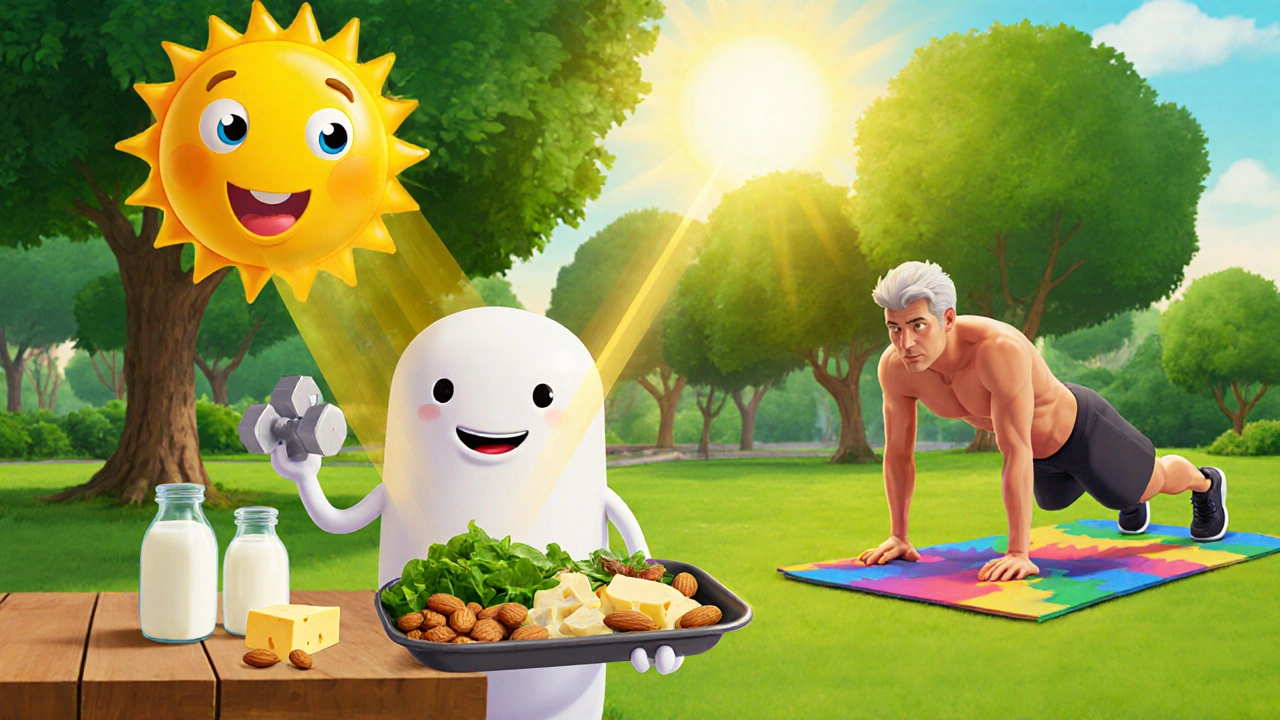
Nutrition: The Armor Your Bones Need
Keeping bone health intact starts on the plate. Two nutrients dominate the conversation:
- calciumthe primary mineral that gives bones their rigidity - aim for 1,000mg/day for most adults, 1,200mg if you’re over 50.
- vitamin Dthe fat‑soluble vitamin that helps the gut absorb calcium efficiently - 800-1,000IU daily is a safe target, unless a doctor suggests more.
But you can’t just pile on dairy; excessive protein or very low‑carb diets can increase calcium excretion in urine. The sweet spot is a balanced, nutrient‑dense diet that supports both weight loss and bone preservation.
Comparison of Popular Diet Approaches on Bone Health
| Diet Type | Calorie Deficit | Calcium Intake | Vitamin D Support | Typical Effect on BMD (12mo) |
|---|---|---|---|---|
| Low‑Calorie (500‑600kcal) | Very High | Often < 800mg | Variable, often low | ‑2‑3% |
| Mediterranean | Moderate | ~1,000mg | Good (fatty fish) | Stable or +0.5% |
| Ketogenic (strict) | High | Varies, can be low | Often low unless fortified | ‑1% (if calcium low) |
| Intermittent Fasting | Variable | Depends on food choices | Depends on meals | Neutral to slight loss |
Bottom line: diets that restrict dairy, leafy greens, or fortified foods tend to nudge BMD downward, while Mediterranean‑style eating often protects or even improves bone metrics.
Exercise: Strengthening Bones While Shedding Pounds
Cardio burns calories, but it’s resistance work that tells bones to stay thick. Resistance trainingany activity that challenges muscles against a load, encouraging bone remodeling-think squats, deadlifts, or body‑weight push‑ups-stimulates osteoblast activity. A 2022 meta‑analysis found that adults who added two 30‑minute strength sessions per week to a calorie‑deficit plan lost the same amount of fat but preserved up to 1.5% more BMD than cardio‑only peers.
Don’t forget impact activities like brisk walking, jogging, or dancing. They generate ground‑reaction forces that signal bone to stay strong. Aim for at least 150minutes of mixed cardio and strength each week.
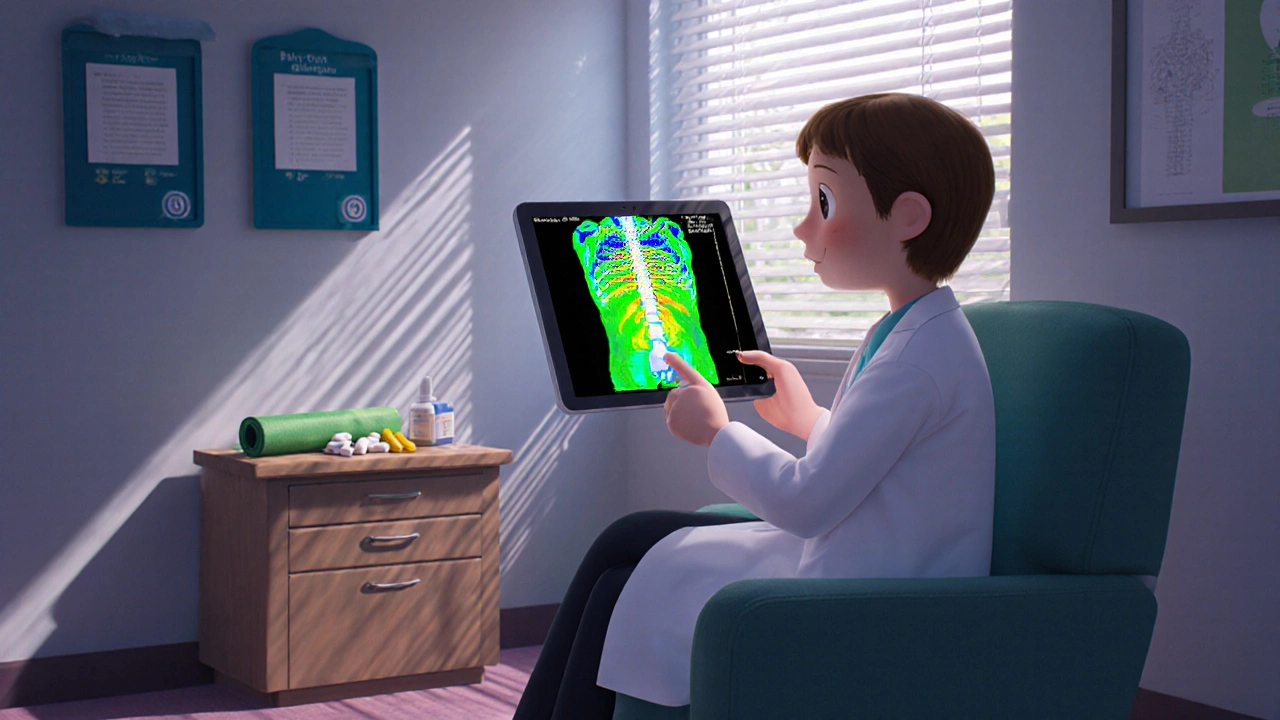
When to Seek Professional Guidance
If you’re losing weight fast (more than 1lb per week) and notice signs such as shin splints, frequent fractures, or a sudden drop in your shoe size, it’s time to talk to a healthcare provider. A dual‑energy X‑ray absorptiometry (DXA) scan measures bone mineral densitythe gold‑standard metric for assessing bone health. If your T‑score dips below -1, you’re entering osteopenia territory, and a doctor might suggest calcium/vitamin D supplements, a revised diet, or a tailored exercise program.
Endocrinologists can also evaluate hormone levels-especially estrogen and thyroid hormones-because imbalances often hide behind rapid weight loss and can accelerate bone breakdown.
Key Takeaways
- Rapid weight loss can lower bone mineral density if not paired with strength training and proper nutrition.
- Calcium (≈1,000mg/day) and vitaminD (800-1,000IU/day) are non‑negotiable for protecting bone during calorie cuts.
- Resistance training at least twice a week is the most effective shield against bone loss.
- Balanced diets like the Mediterranean pattern outperform extreme low‑calorie or strict keto plans for bone health.
- Monitor bone health with a DXA scan if you lose >10% of body weight or experience bone‑related symptoms.
Frequently Asked Questions
Can I lose weight without harming my bones?
Yes. Aim for a moderate calorie deficit (500kcal/day), keep calcium and vitaminD intake high, and incorporate resistance training at least twice weekly. This combo helps you shed fat while keeping bone density stable.
How much weight loss is too fast for bone health?
Losing more than 1-1.5lb (0.5-0.7kg) per week typically signals a calorie deficit that may affect bone. If you’re dropping >10% of your body weight in under six months, consider a medical check‑up.
Do I need a calcium supplement if I’m on a low‑calorie diet?
If you can’t meet 1,000mg of calcium through food, a supplement (500‑600mg) can fill the gap. Pair it with vitaminD to boost absorption.
Is osteoporosis only a concern for older adults?
While prevalence rises with age, younger adults can develop osteopenia-particularly after aggressive weight‑loss programs. Early detection via DXA can prevent progression.
What are the best foods to protect my bones while dieting?
Think dairy or fortified plant milks, leafy greens (kale, bok choy), sardines, almonds, and fatty fish for vitaminD. Combine these with lean protein to keep muscle mass-and thus bone support-intact.
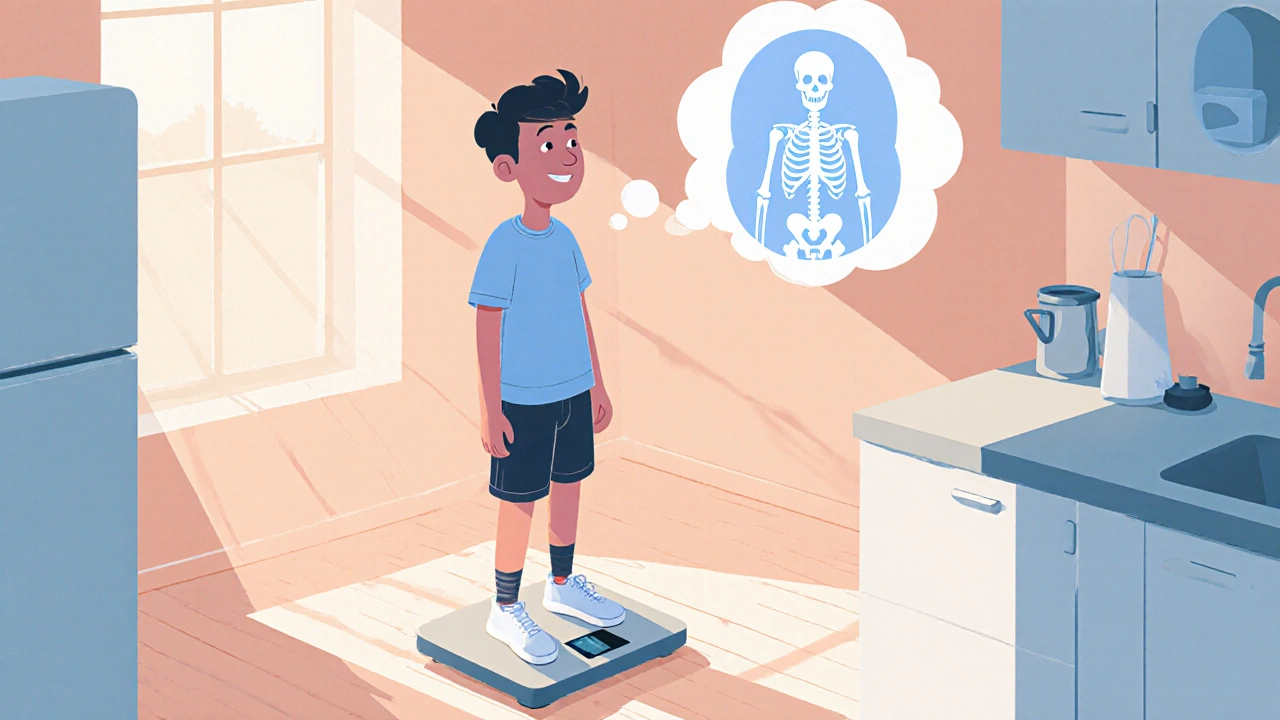
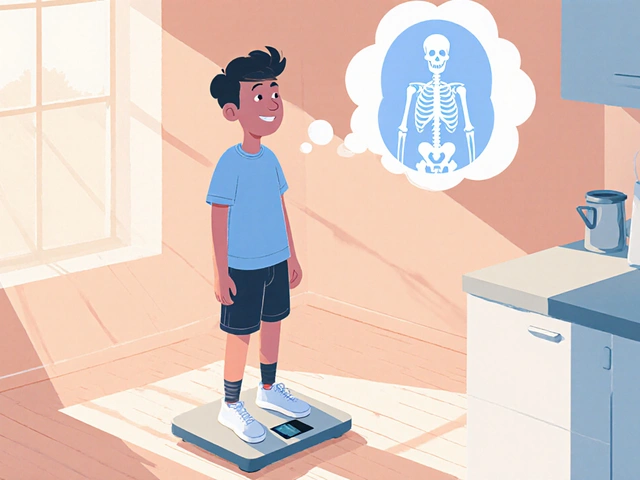
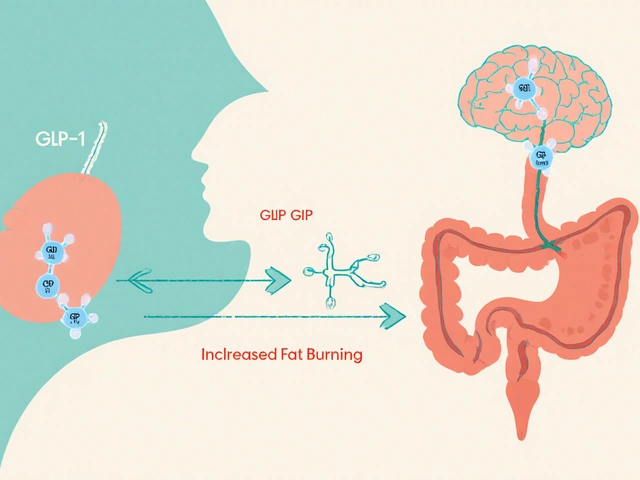
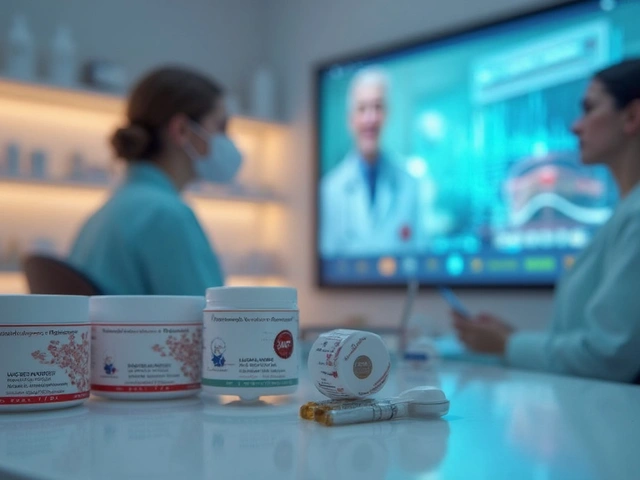

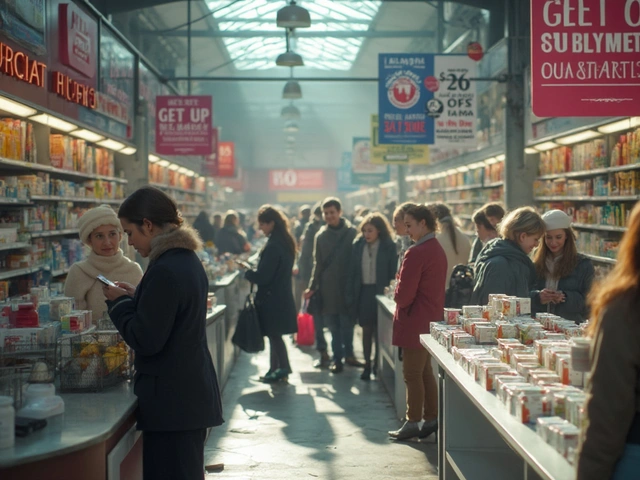



Laura Sanders October 15, 2025
So basically losing weight can actually chew away at your bone mass. It’s not some myth, the studies from ’23‑’24 show a measurable dip. Keep calcium high and throw in some squats if you wanna stay solid.
Jai Patel October 29, 2025
If you’re on a mission to shred the flab, remember that your skeleton is not a passive by‑stander.
It’s like a backstage crew that needs the right props to stay sturdy while the spotlight shines on the waistline.
First off, a moderate caloric deficit-about five hundred calories per day-keeps the metabolic furnace humming without starving your bone‑building cells.
Pair that with at least a gram of protein per kilogram of body weight, and you’ll preserve lean muscle, which in turn cushions the bones from needless erosion.
Don’t forget the golden duo of calcium and vitamin D; think of them as the mortar holding the bricks of your femur together.
A daily intake of roughly one thousand milligrams of calcium and eight hundred to one thousand IU of vitamin D is the sweet spot for most adults.
If you’re chasing a Mediterranean‑style plate, you’re already loading up on leafy greens, nuts, and oily fish-all excellent sources of these nutrients.
Now, sprinkle in resistance training two to three times a week-think deadlifts, squats, or even body‑weight push‑ups-and you’ll signal your osteoblasts to keep building bone mass.
Even a brisk jog or a night of dancing adds those impact forces that whisper ‘stay strong’ to your skeletal system.
Studies from 2023 showed that participants who combined cardio with strength work lost the same amount of fat but retained up to 1.5 % more bone density compared to cardio‑only peers.
That’s a win‑win you can’t ignore, especially if you’re aiming for a long‑term transformation rather than a quick fix.
If you happen to be on a low‑carb or keto plan, make sure you’re fortifying your dairy or plant‑based alternatives with extra calcium.
Otherwise, the acid‑base balance can shift and increase calcium excretion in the urine, sneaking away precious mineral reserves.
Finally, schedule a DXA scan if you’ve dropped more than ten percent of your body weight in six months; catching osteopenia early gives you a chance to tweak the plan before it spirals.
Bottom line: a balanced diet, adequate sunshine or vitamin D supplementation, and consistent strength work are the trifecta that protects both the waistline and the skeleton.
Zara @WSLab November 11, 2025
Love how you broke it down-very clear and motivating! 😊 Adding a couple of kettlebell swings each session will give those bones an extra shout‑out.
Randy Pierson November 24, 2025
Just a heads‑up: when you’re juggling macro counts, double‑check that you’re not slashing calcium inadvertently.
Even a small dairy‑free shake fortified with calcium can save the day.
Grammar note: it’s “you’re not slashing” not “your not slashing”.
Bruce T December 8, 2025
Honestly, if you’re cutting calories like a maniac, you’re basically begging for bone trouble.
People need to think beyond the mirror and respect what their bodies need to stay intact.
Darla Sudheer December 21, 2025
Nice recap, thanks for the pointers.